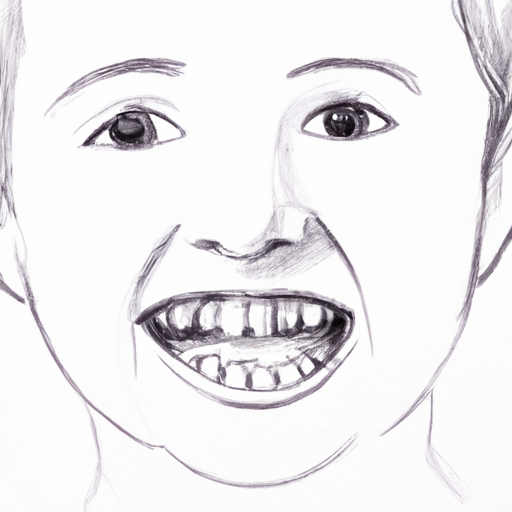Children's dental health is an important aspect of their overall well-being, yet it often goes overlooked or underestimated. From common symptoms and causes to accurate diagnosis and effective treatment approaches, understanding children's dental issues is crucial for parents and caregivers. In this article, we will delve into the world of children's dentistry, exploring the various aspects that contribute to dental problems in children. We will discuss the common symptoms, causes, and how to accurately diagnose these issues. Additionally, we will provide expert insights and best practices for treating children's dental problems. Furthermore, we will emphasize the significance of preventive measures such as promoting good oral hygiene habits and early intervention to prevent dental woes in kids. By equipping ourselves with knowledge and implementing preventive strategies, we can ensure that our children maintain a healthy and beautiful smile throughout their lives.
1. "Understanding Children's Dental Issues: Common Symptoms, Causes, and Diagnosis"
As parents, it is crucial to understand the dental issues that can affect our children and the importance of early diagnosis and treatment. Children's dental problems can differ from those experienced by adults, requiring specific attention and care. In this section, we will explore some of the most common symptoms, causes, and methods of diagnosing dental issues in children.
One of the primary dental issues experienced by children is tooth decay or cavities. This occurs when bacteria in the mouth produce acids that attack the tooth enamel, leading to the formation of small holes or cavities. Symptoms of tooth decay in children may include tooth sensitivity, pain or discomfort while chewing, visible holes or discoloration on the teeth, and bad breath. Poor oral hygiene, high sugar consumption, and irregular dental visits are common causes of tooth decay in children.
Another prevalent dental issue among children is gum disease, also known as gingivitis. Gingivitis is an inflammation of the gums caused by the buildup of plaque, which contains bacteria. Symptoms of gum disease in children may include swollen, red, or bleeding gums, bad breath, and gum recession. Poor oral hygiene, hormonal changes during puberty, and certain medical conditions can contribute to the development of gum disease in children.
Malocclusion, or misalignment of teeth, is another dental problem that affects many children. This can occur due to genetics, thumb-sucking, prolonged pac
2. "Effective Treatment Approaches for Children's Dental Problems: Expert Insights and Best Practices"
When it comes to children's dentistry, effective treatment approaches are crucial to ensure the oral health of young patients. Dental problems in children can vary in severity, ranging from common issues like cavities and tooth decay to more complex conditions such as malocclusions or tooth malformations. To provide the best care possible, dental professionals must employ expert insights and follow best practices specifically tailored for pediatric patients.
One of the primary considerations in children's dental treatment is understanding their unique needs and fears. Dentists who specialize in pediatric dentistry are well-versed in handling anxious and uncooperative children. They create a welcoming and child-friendly environment to help ease any apprehensions. This may involve using age-appropriate language, providing distractions like toys or television during procedures, and explaining each step of the process in a simple and understandable manner.
Preventive care plays a significant role in children's dentistry, and regular dental check-ups are essential. Dentists recommend scheduling the first dental visit shortly after the eruption of a child's first tooth or by their first birthday. These early visits allow the dentist to assess oral health, provide guidance on proper oral hygiene practices, and identify any potential issues at an early stage.
Fluoride treatment is another crucial aspect of children's dental care. The application of fluoride varnish or gel helps protect the teeth from decay and strengthens the enamel. Dentists may recommend
3. "Preventing Dental Woes in Kids: Promoting Good Oral Hygiene Habits and Early Intervention"
Maintaining good oral hygiene habits and early intervention are crucial in preventing dental issues in children. By promoting these practices, parents and caregivers can help their children develop strong and healthy teeth, ensuring a lifetime of good oral health.
One of the most effective ways to prevent dental woes in kids is to establish a routine of proper oral hygiene from a young age. Parents should start cleaning their child's gums even before the appearance of the first tooth. Using a soft cloth or infant toothbrush, gently wipe the gums after each feeding to remove any leftover milk or food particles. This helps prevent the buildup of bacteria and lays the foundation for good oral health.
As soon as the first tooth emerges, usually around six months of age, it is essential to start brushing with a small, soft-bristled toothbrush and a grain-sized amount of fluoride toothpaste. Parents should assist their children with brushing until they are around six years old, ensuring that all surfaces of the teeth are thoroughly cleaned. Teaching children the proper brushing technique and making it a fun and engaging activity can encourage them to embrace good oral hygiene habits.
In addition to brushing, regular flossing should be introduced once the child's teeth start to touch each other. Flossing removes plaque and food particles from between the teeth and helps prevent cavities and gum disease. Parents should guide their children on how to floss correctly and supervise the process until

